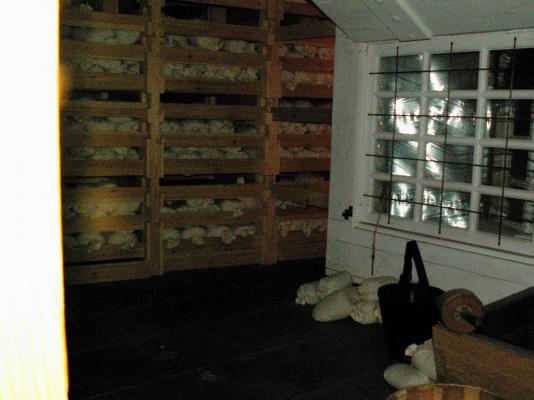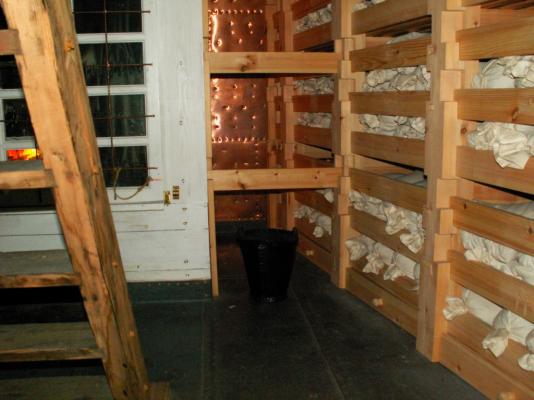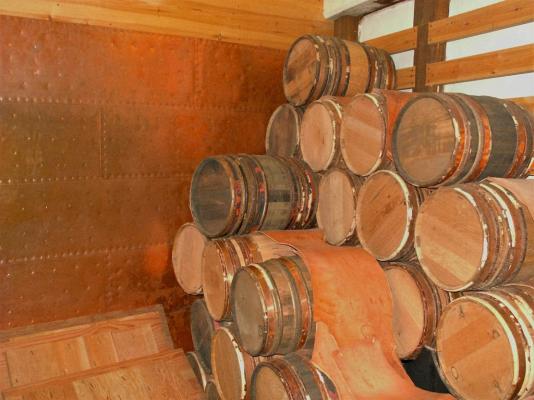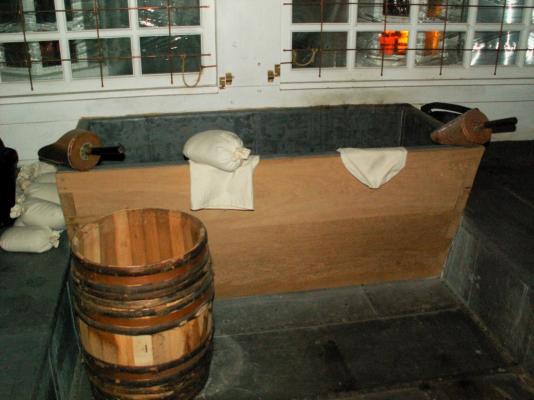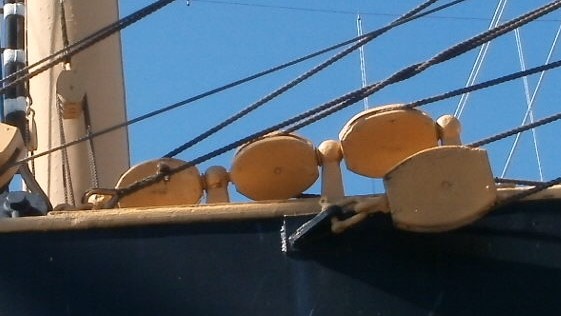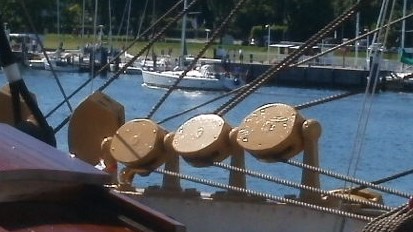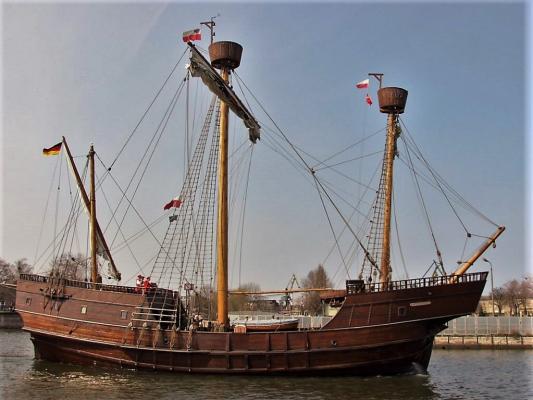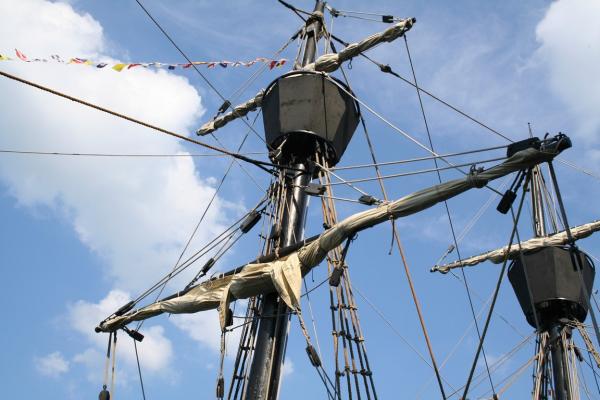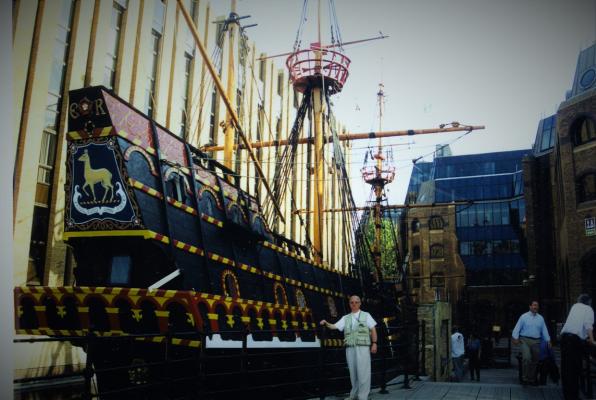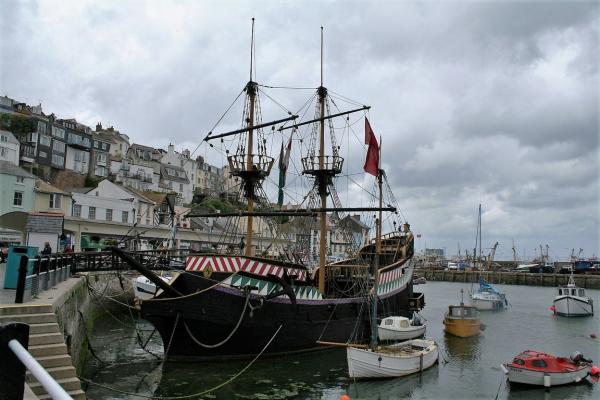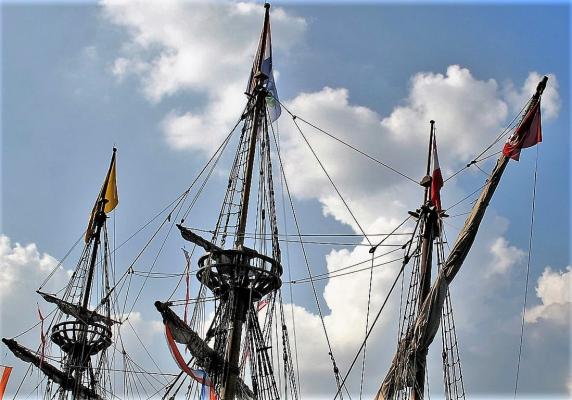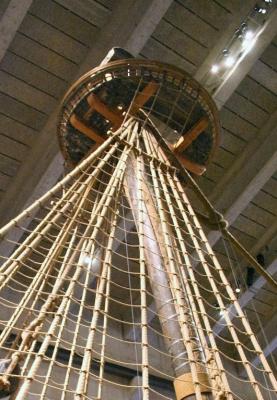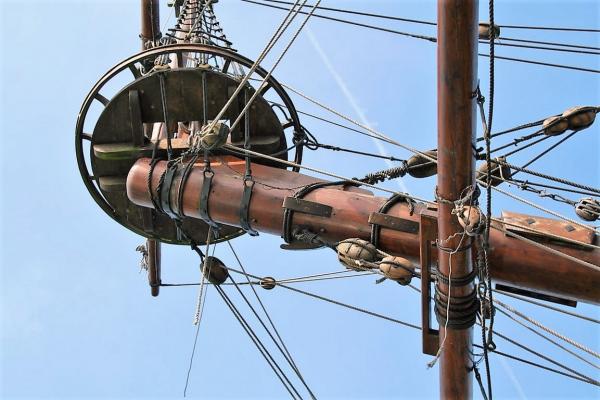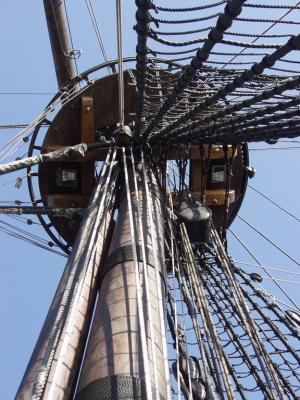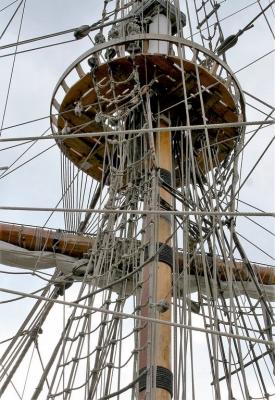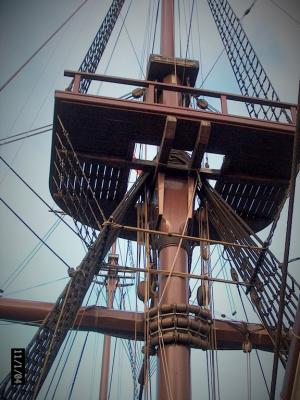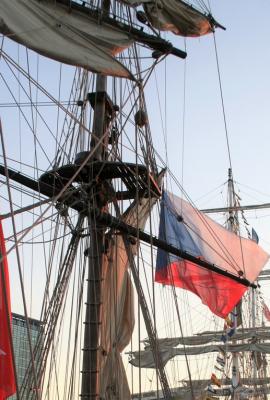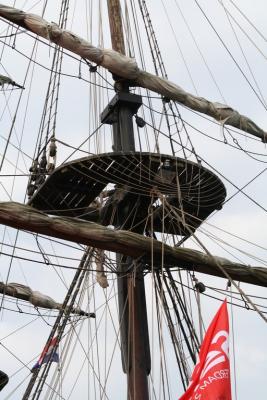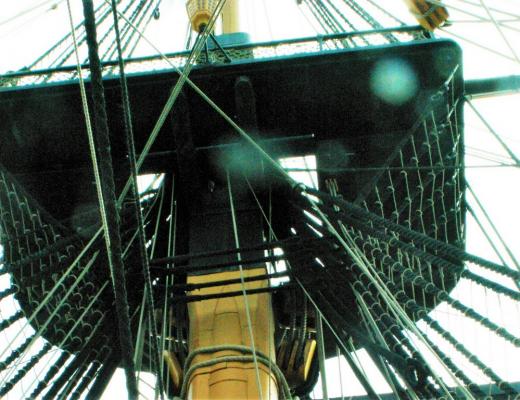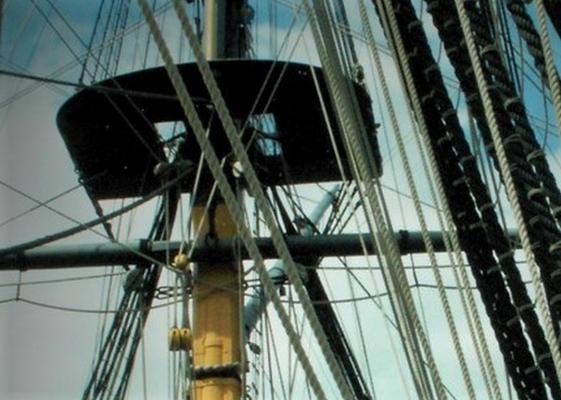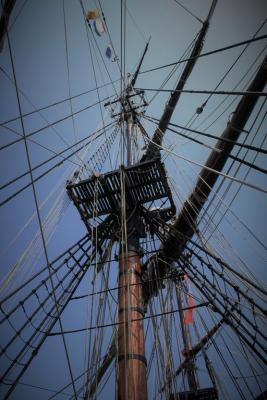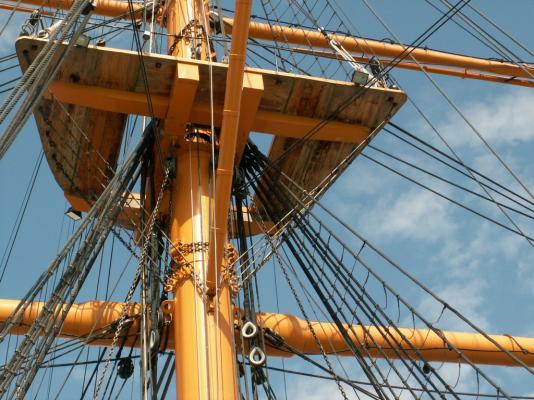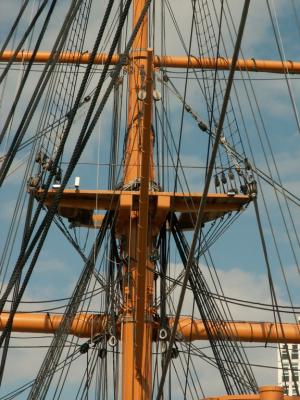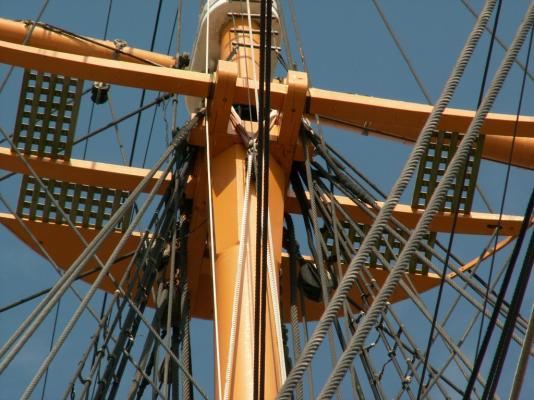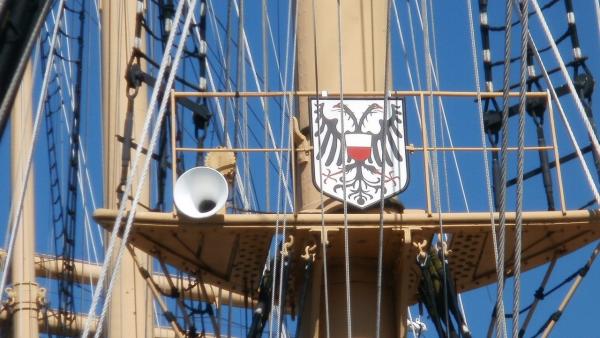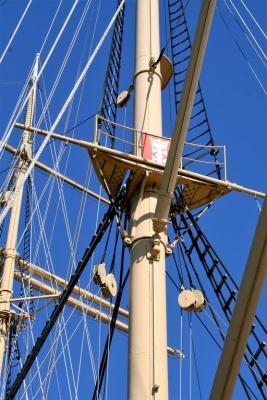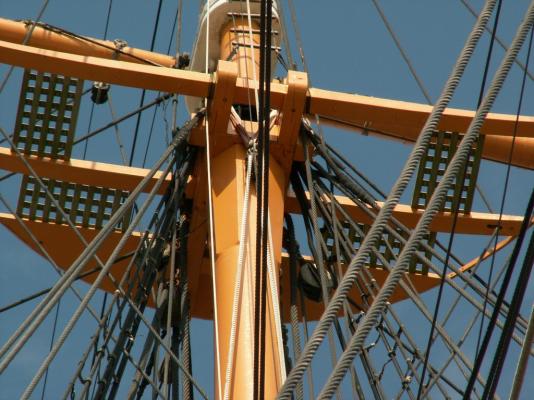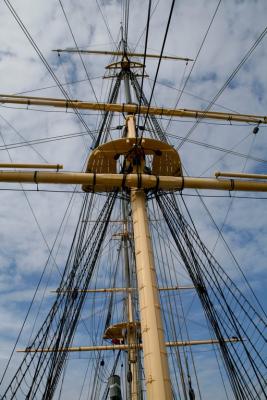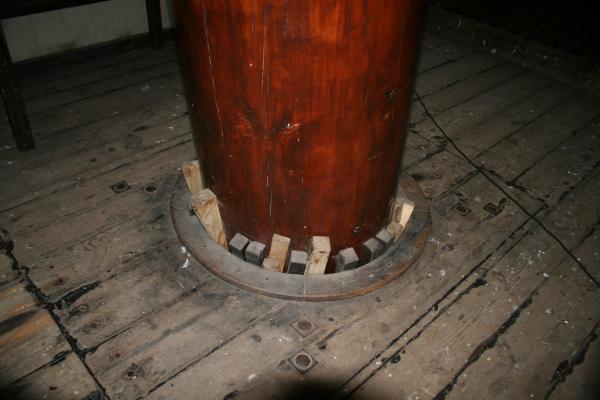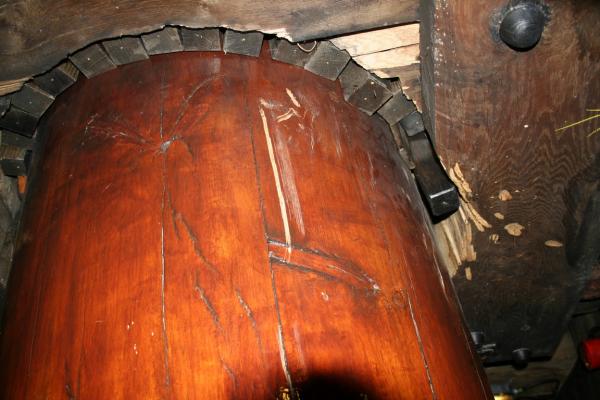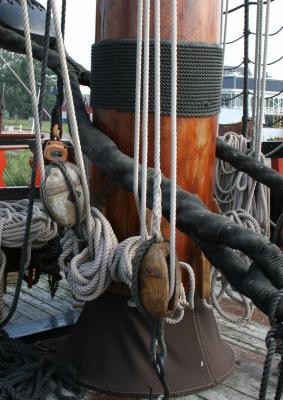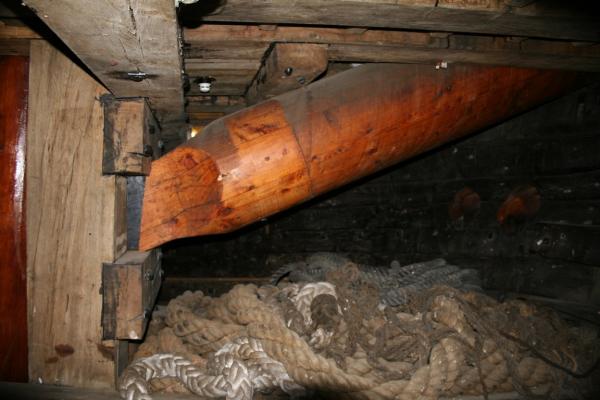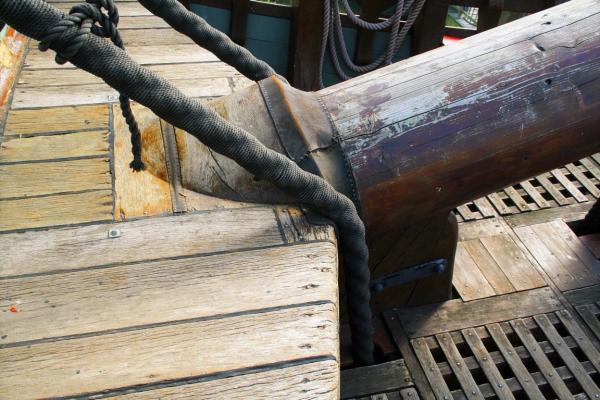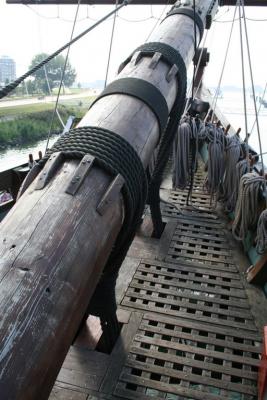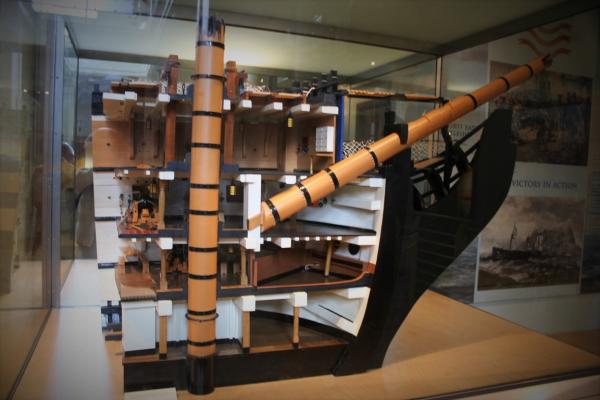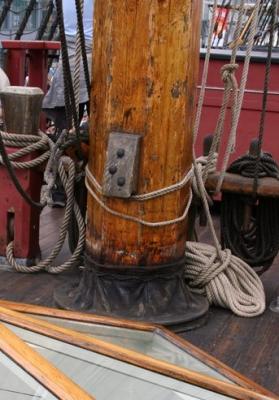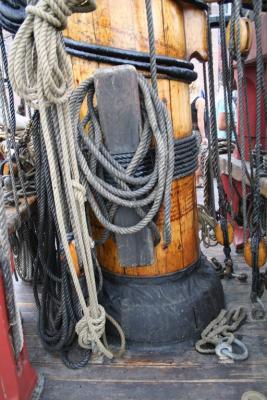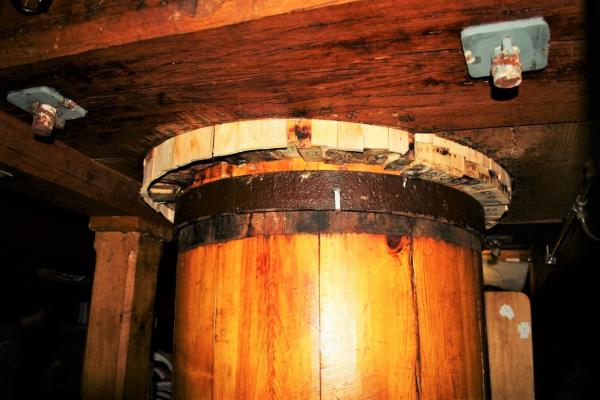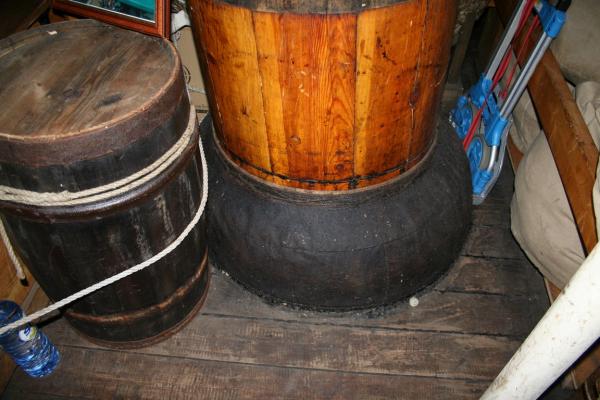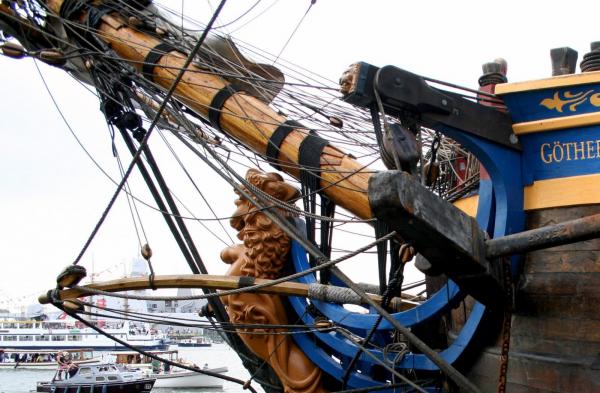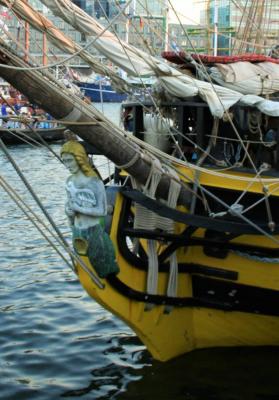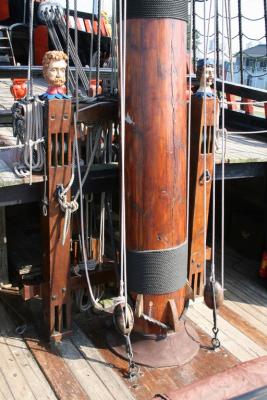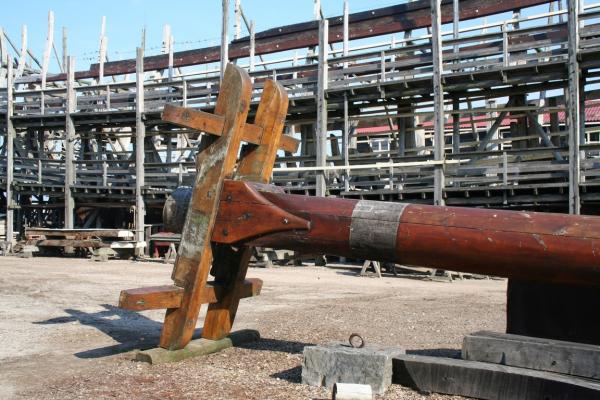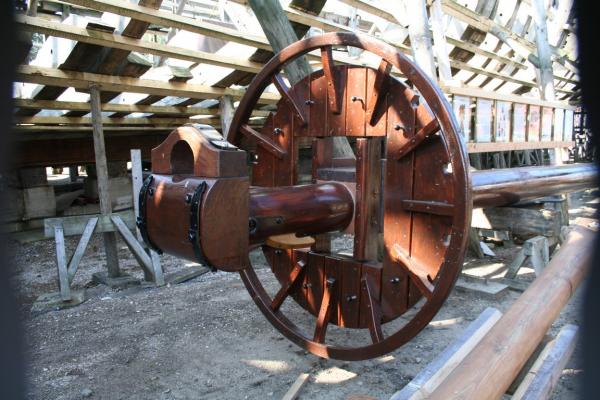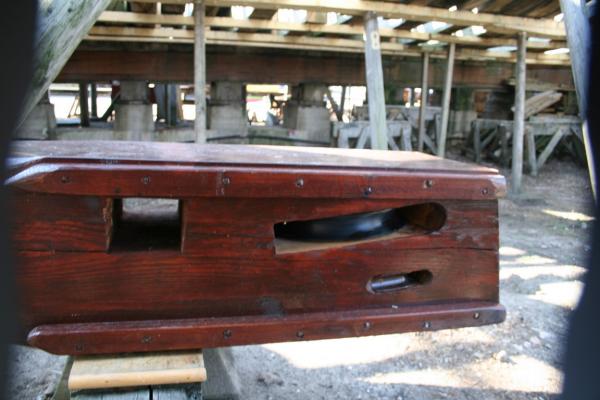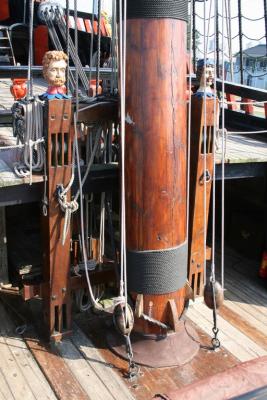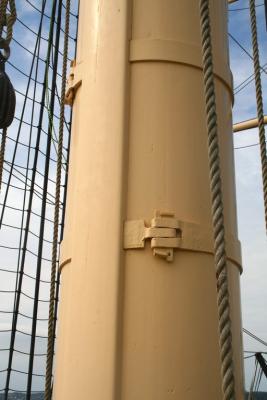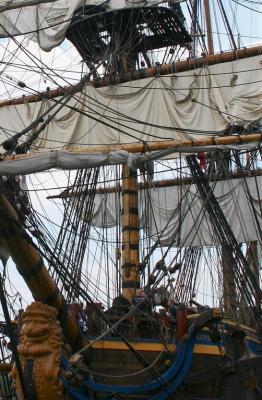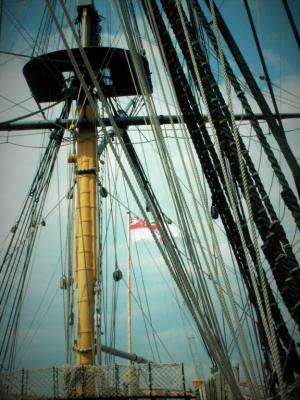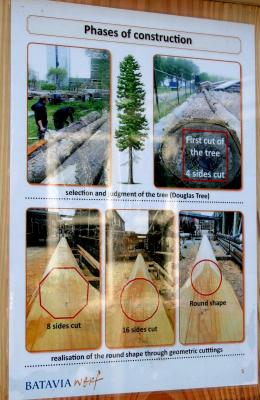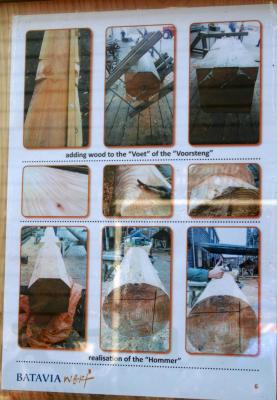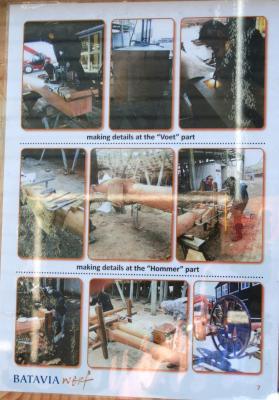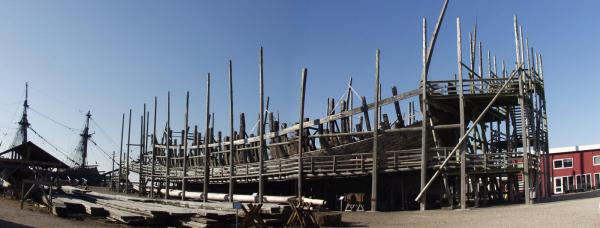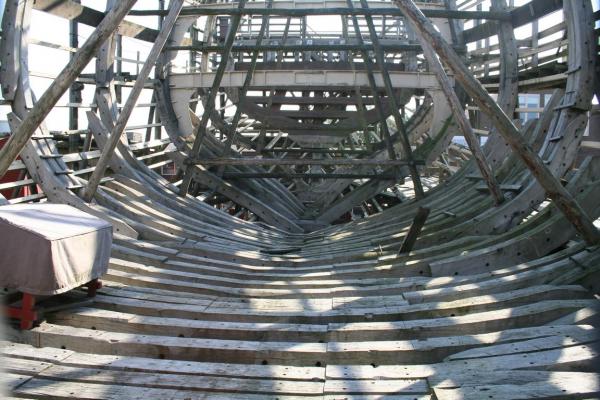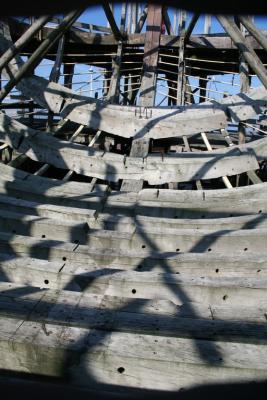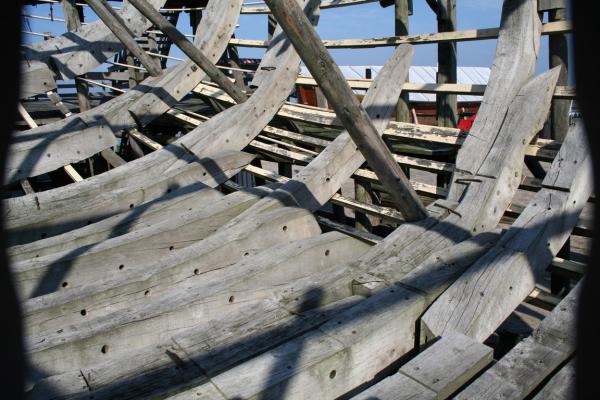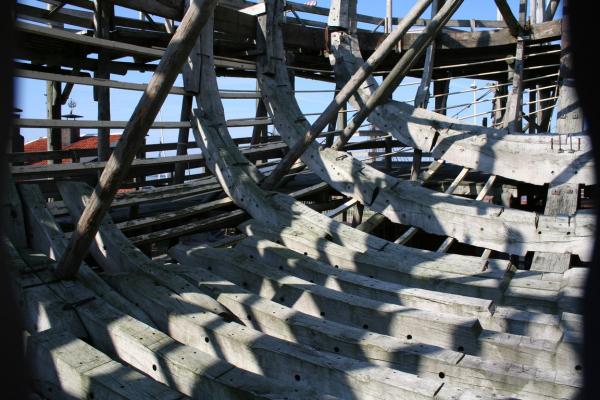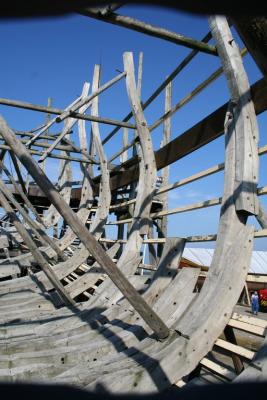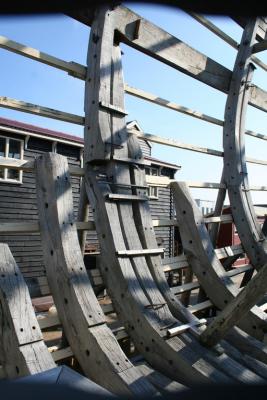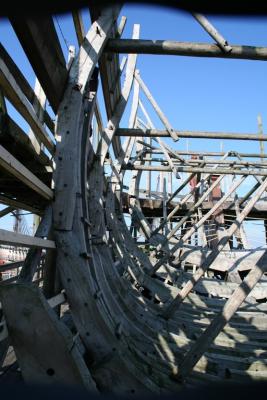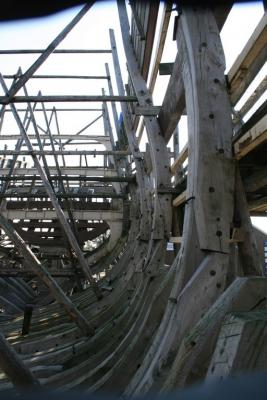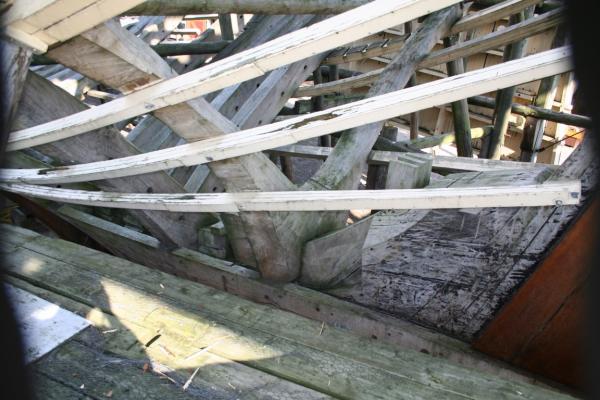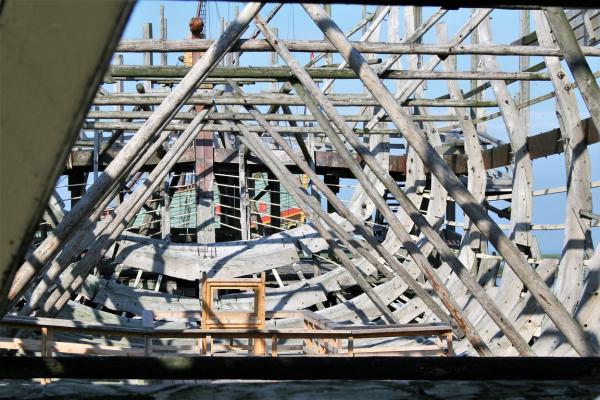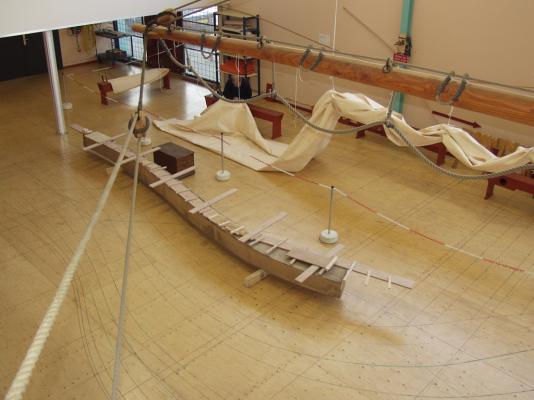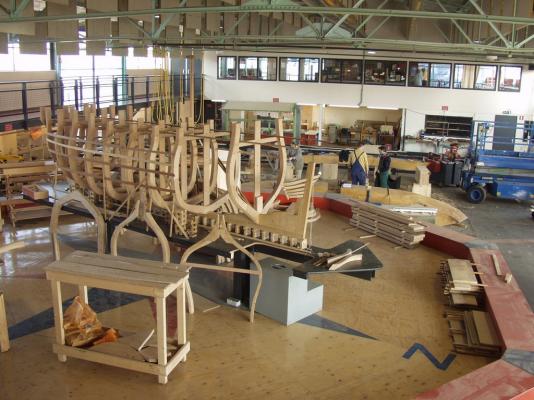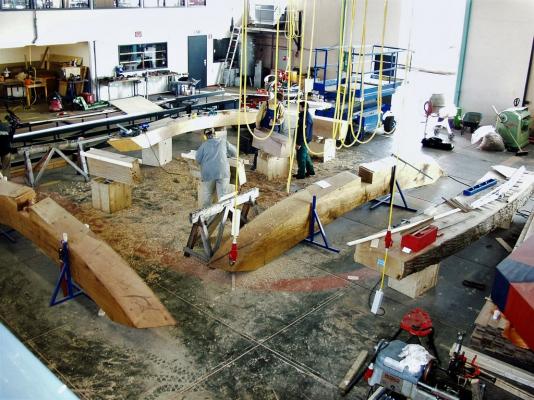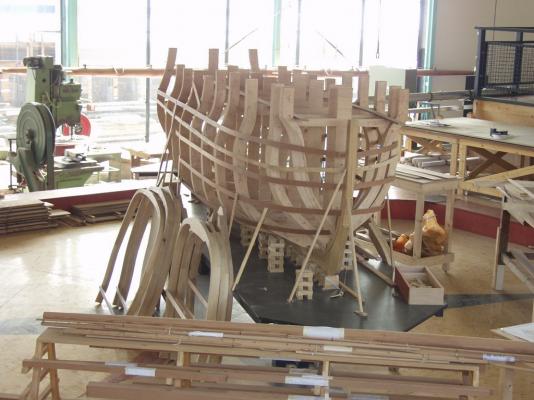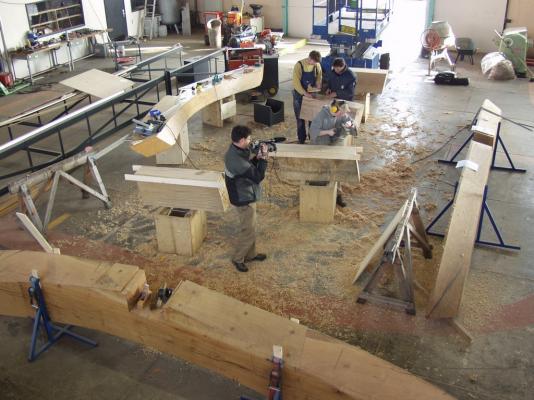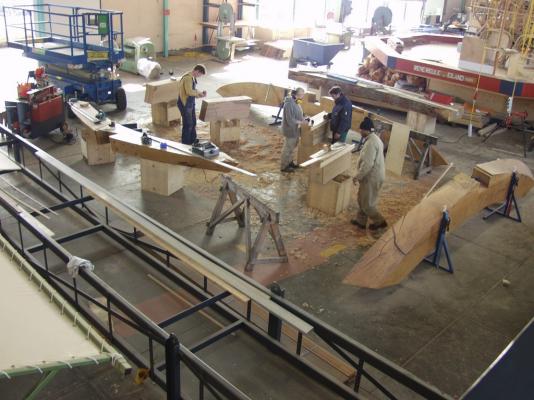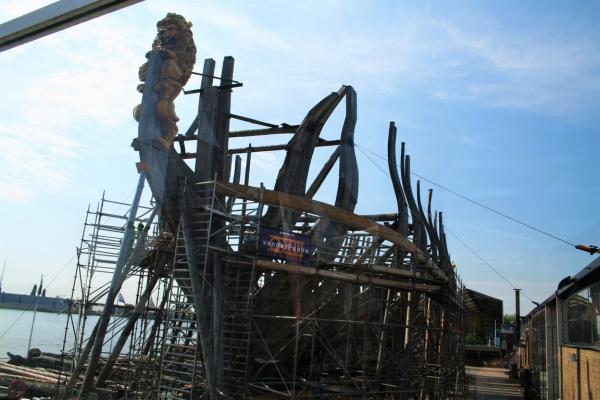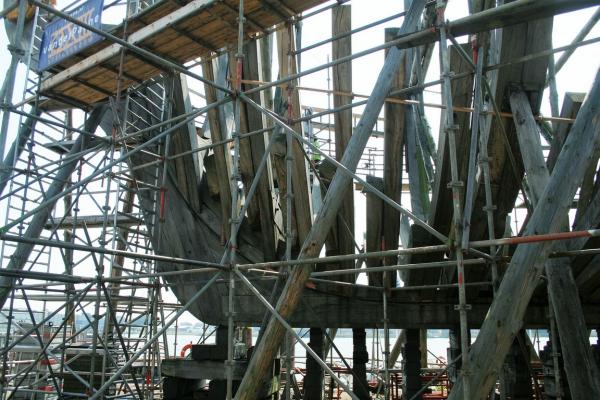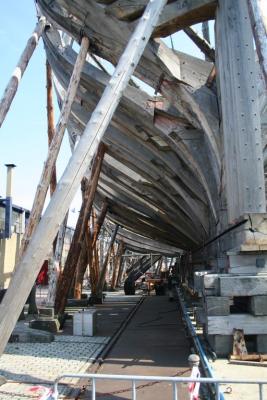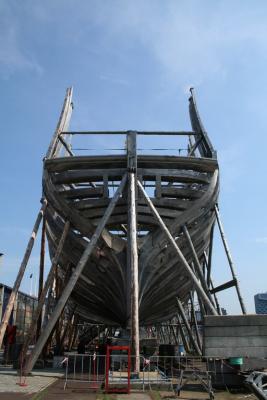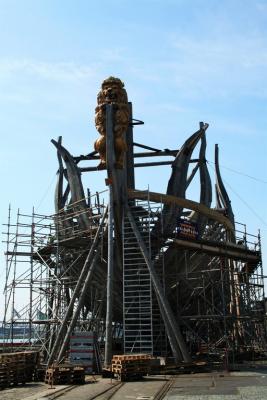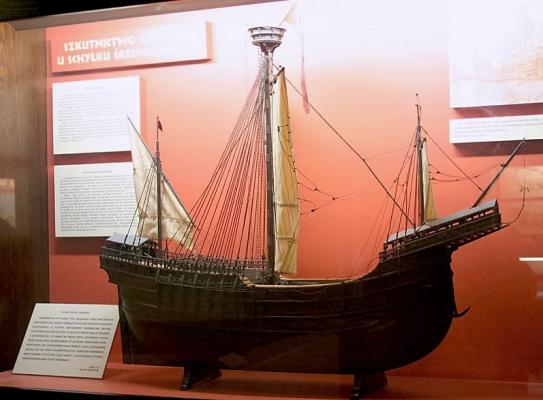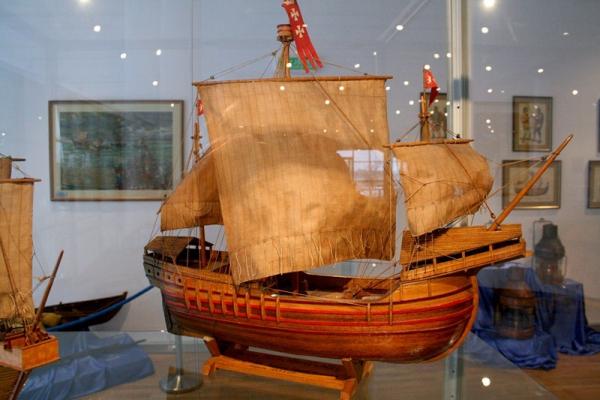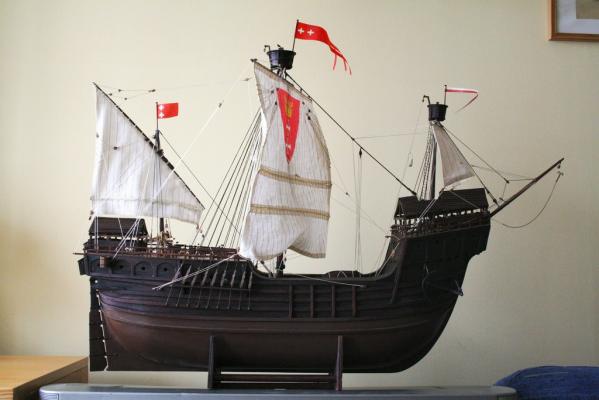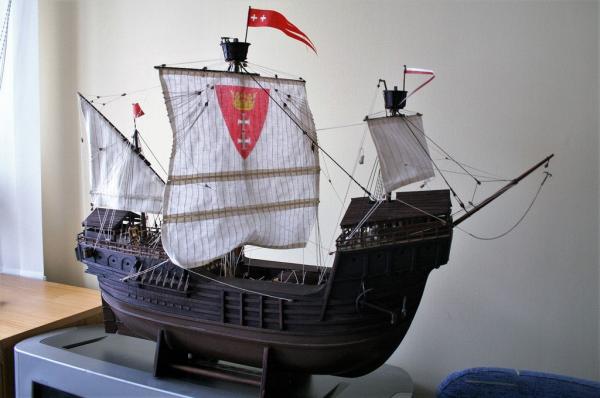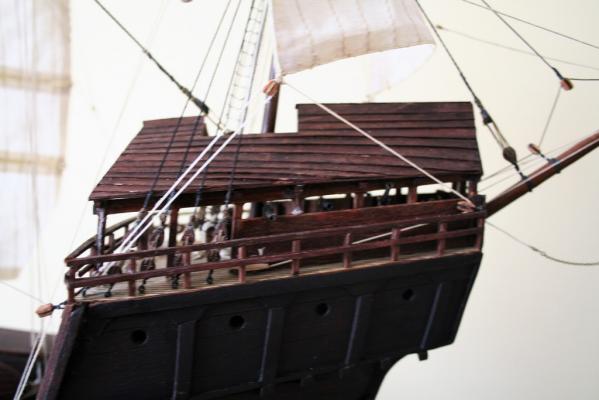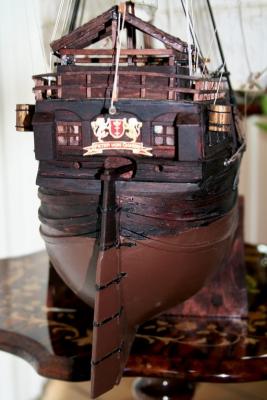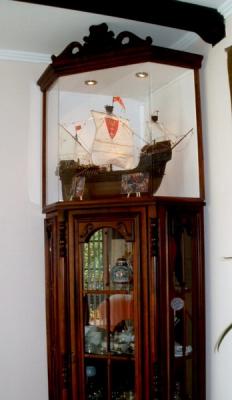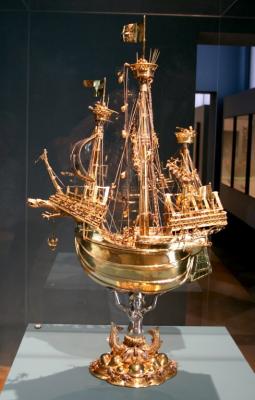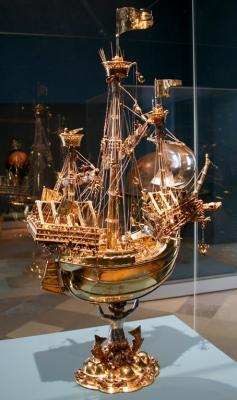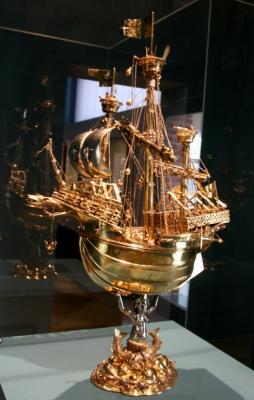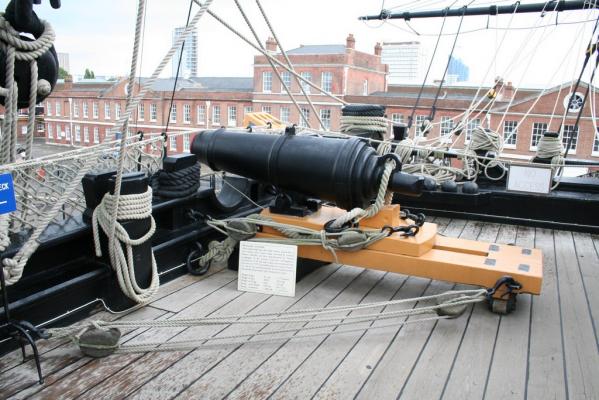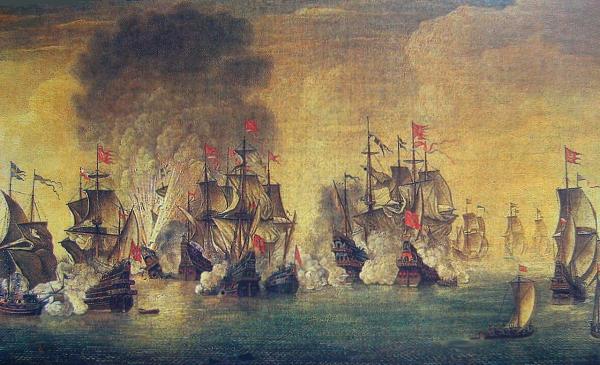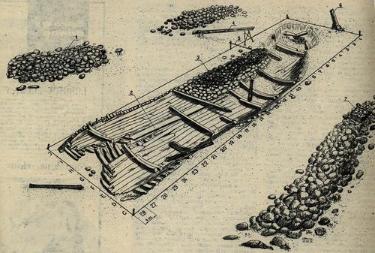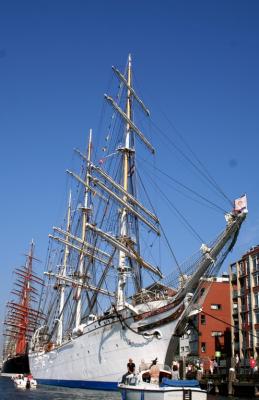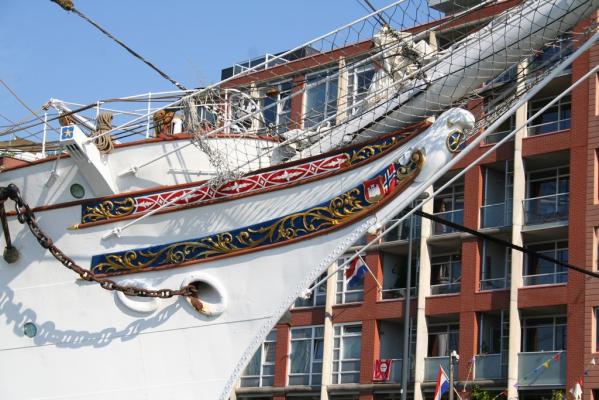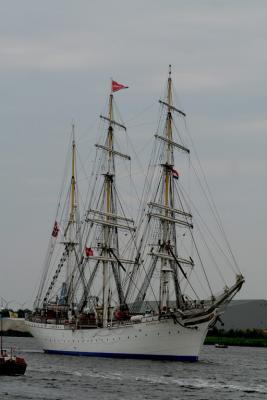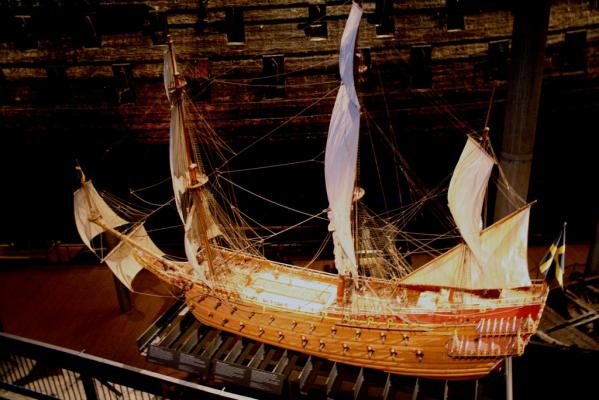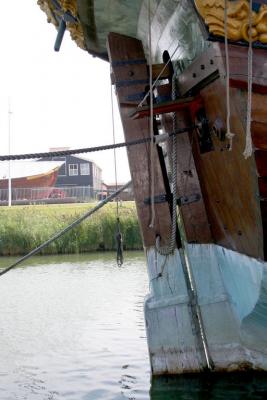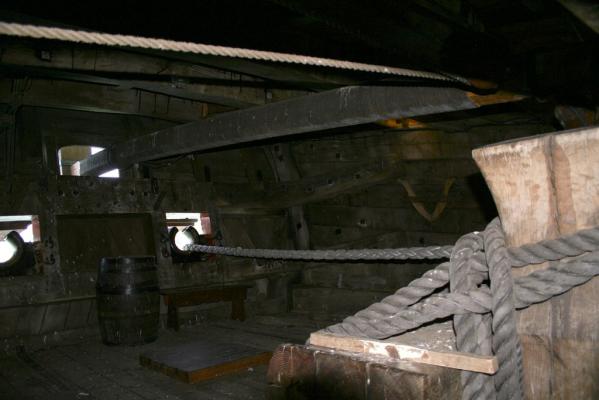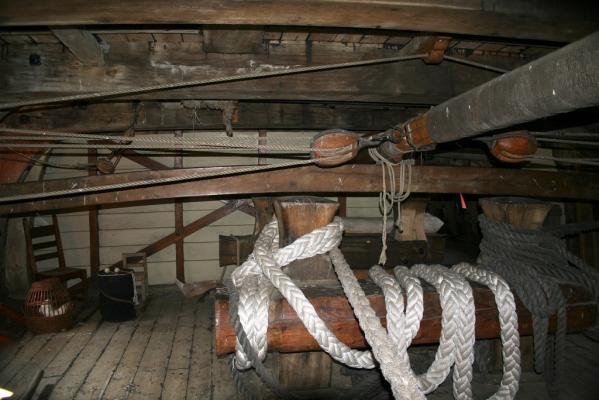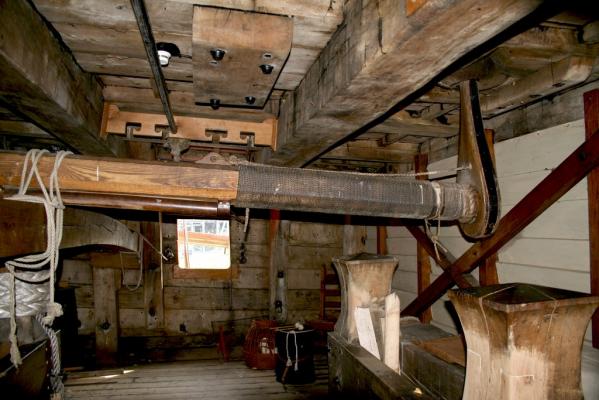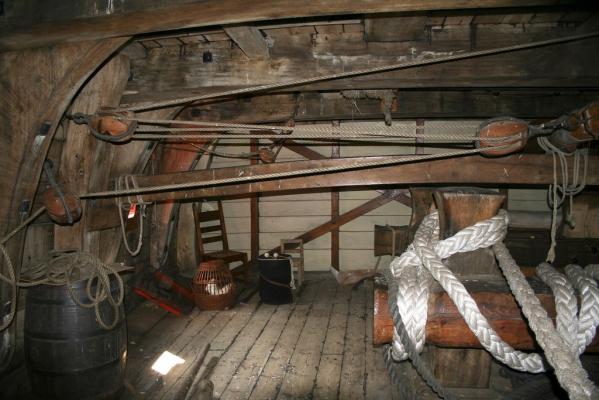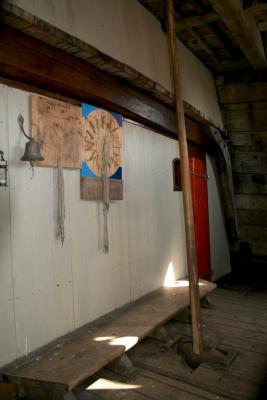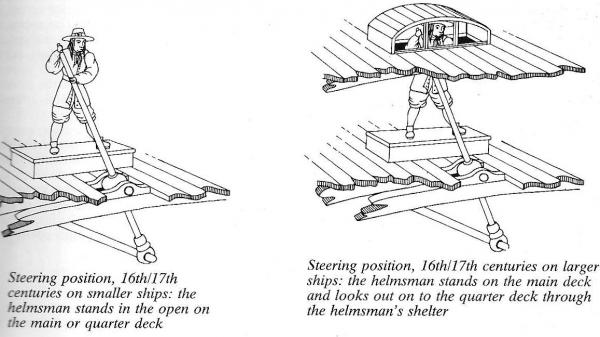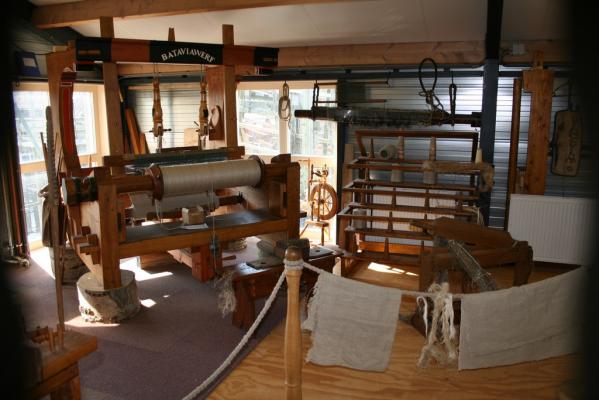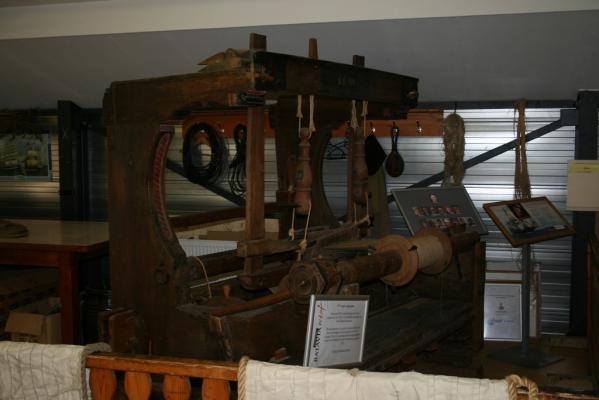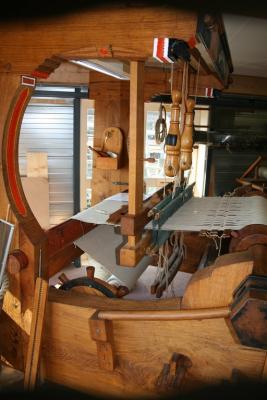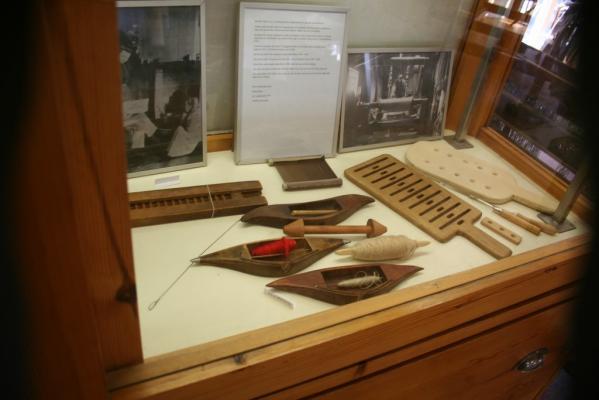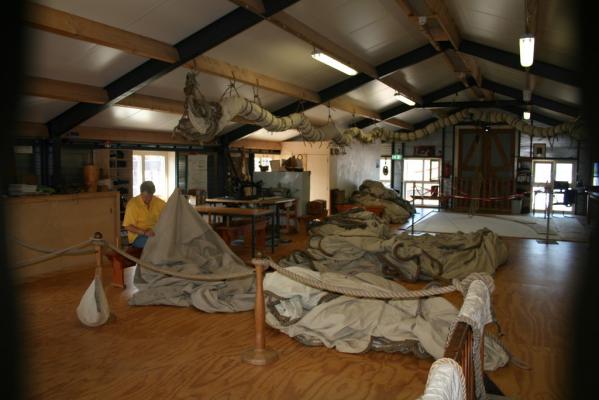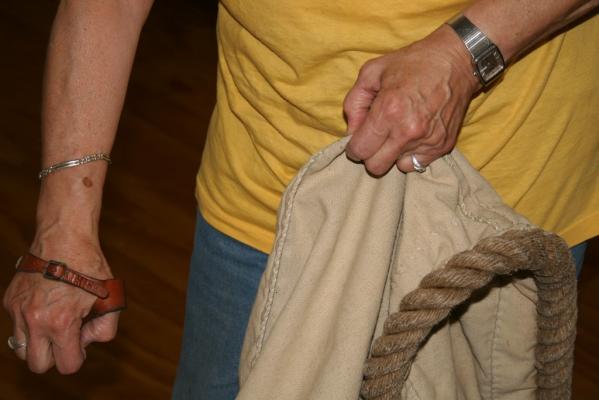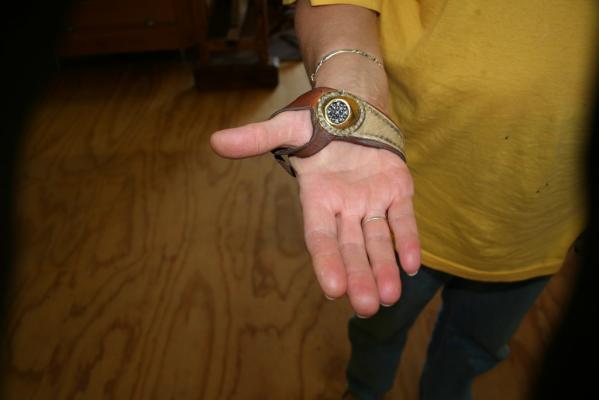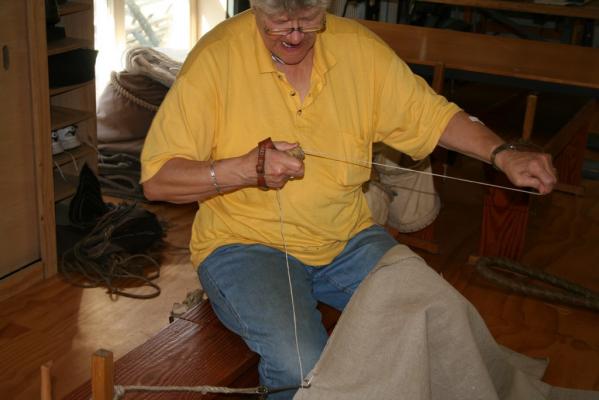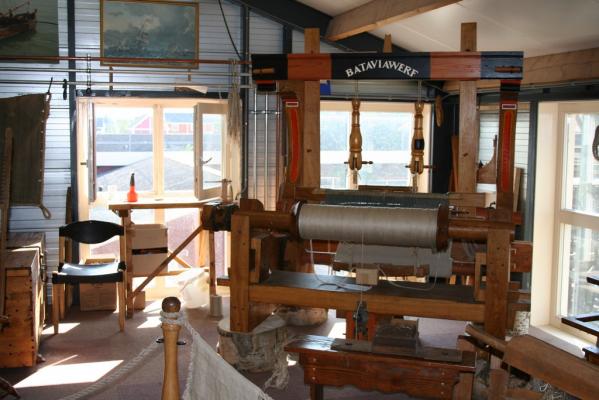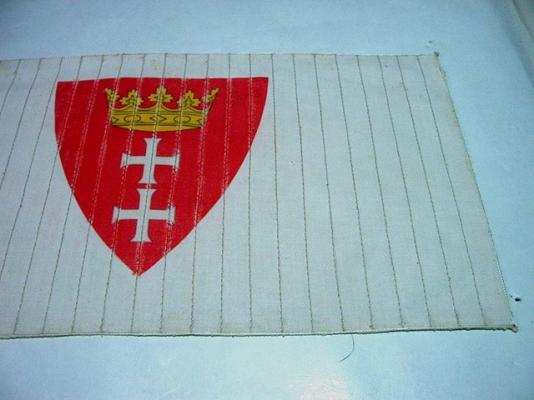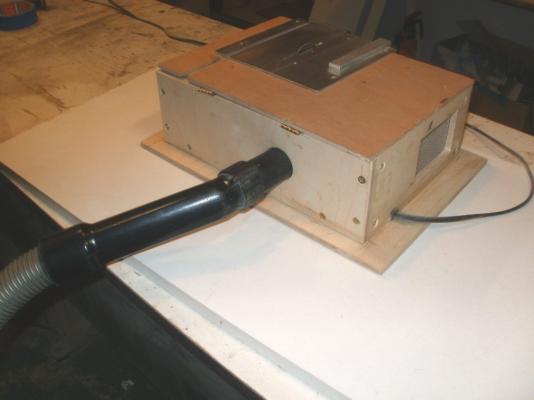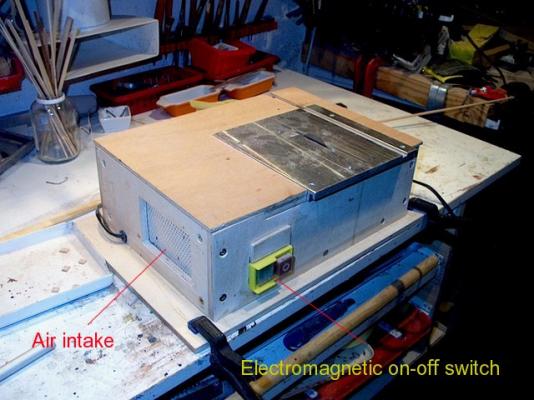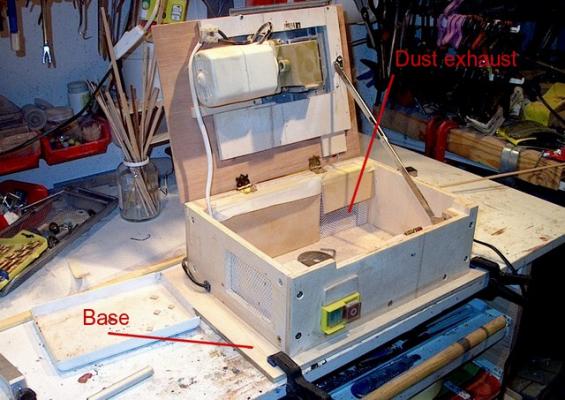-
Posts
519 -
Joined
-
Last visited
Content Type
Profiles
Forums
Gallery
Events
Everything posted by Tadeusz43
-
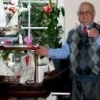
Looking for help building the triple sisters
Tadeusz43 replied to HKC's topic in Masting, rigging and sails
-
Tops The construction of platforms fitted on mast tops were changed during the centuries from „baskets” or round platforms with high guard rails up to the end of 17th century. In 19th century tops was made as flat platforms supported on crosstrees. Tops was used as access to topmast sails as also battle station for archers, gun shooters or even small cannons. Tadeusz Lisa von Lubeck (15th century) Neff Victoria (beginning of16th century) Golden Hind (end of 16th century) Halve Maen (beginning of 17th century) Vasa (beginning of 17th century) Spirit mast top Batavia Batavia (17th century) Shtandard (beginning of 18th century) Amsterdam (18th century) La Grace (18th century) Gotheborg (18th century) Victory ( 18th century) Bounty ( end of 18th century) Warrior (19th century) Jylland (end of 19th century) Passat (beginning of 20th century)
-

Steam tool for bending wood model ship planks?
Tadeusz43 replied to mobile1's topic in Modeling tools and Workshop Equipment
Hi, I soak planks in boiling water for few minutes then place on bending jig and allow to dry. Tadeusz -

Crimping tool for wood ship side planks?
Tadeusz43 replied to mobile1's topic in Modeling tools and Workshop Equipment
Hi, Save money. The best jig for plank bending is self made I use similar for this from post #25 http://modelshipworld.com/index.php/topic/11432-nuestra-senora-de-la-conception-y-de-las-animas-by-nmbrook-172-dusek-ship-kits/page-2 In my is possible bending few planks the same time. After steaming or simple boiling in waterplanks are placed on jig and allowed to dry. Tadeusz My models: From kits Vasa, HMS Victory, Le Solei Royale, Friesland From scratch HMS Warrior 1860, Esplanade, Grosse Yacht Norman’s ship, HMS Speedy, La Royale Peter von Danzig Polacca XVII cent. Current project: SS Savannah 1818 -
Hi, Fixing mast on the ship. Mast are fixed in the desk with wooden wedges. For make this joint watertight is used tarred canvas cover named mast coat. Tadeusz Mast partners at deck Batavia Bowsprit support Batavia Bowsprit double gammoning Batavia Bowsprit coat Batavia Fore mast and bowsprit arrangement Victory Mast partners at deck Gotheborg Bowsprit double gammoning Gotheborg Bowsprit single gammoning Sthandard Bowsprit double gammoning La Grace
-
Hi, Masts. Masts on boats and small ships was made from single timber (pine or spruce). On larger vessels masts was assembled from few timbers for obtain required diameter as also reinforced by external woods named fish. The fish was installed on front or/and on sides of masts . All this structure was hold together with rope wooldings or later with iron hoops. Tadeusz Mast making in Batvia Werf Batavia mast with woolding Batavia Mast crosstrees Batavia Mast cap continental style andmast top Batavia Topmast heel Batavia Mast wooldings Iron hoops and front fish Jylland Rope wooldings and front fish Gotheborg Mast with fishes anr iron hoops Victory
-
Hi, Construction of a replica of the 17th century ship De 7 Provincien has a long history. Works started in 1995 in Batavia Werf in Lelystad but due to severe technical problems that work was completely wrecked. In 2008 again started the construction of the ship but in 2014 work stopped because to lack of funding. https://en.wikipedia.org/wiki/Dutch_ship_De_Zeven_Provinci%C3%ABn_%281665%29 Tadeusz Construction site in Spring 2003 Construction site in August 2015
-
Hi, I collect photos concerning hull structure and construction from presently constructed replicas of Dutch ships De Delft ( in Rotterdam) and De 7 Provincien ( Batavia werf in Lelystad). They show details of the construction of the hull . Tadeusz De Delft Spring 2003 Keel and stern post Frame details in workshop. On the floor are drawn shapes of frames in scale 1:1. Large scale structural model for final checking of frame shapes Frame details machining August 2015
-
Hi Dick, Plans was from Associazione Navimodellisti Bolognes, Bologne Italy .http://www.anb-online.it/?lang=en Actual price 12,81 Euro ( wthout postage ) With my modifications. This original ship was constructed in Bretagne, France. Tadeusz
-
Hi, Models of Peter von Danzig: Foto 1 Model in Maritime Museum in Gdańsk Foto 2 Model in Polish Navy Museum in Gdynia Foto 3 -5 My model Tadeusz
-
Hi, There is simple explanation of this phenomena. In many fleets of war there is a tradition of naming new ships names of their predecessors, so was the instance with Admiral Nelson's HMS Victory 1765. She was the fifth in the history RN ship named "Victory", the former sank in 1744. Tadeusz
- 10 replies
-
- 17th century
- 66 cannons
-
(and 1 more)
Tagged with:
-
Hi, Other known wrecks of Swedish ships. https://en.wikipedia.org/wiki/Swedish_warship_Mars Mars, also known as Makalös ("peerless; astounding") was a Swedish warship that was built between 1563 and 1564. It was the leading ship of king Eric XIV of Sweden's fleet, and at 48 meters[1] and equipped with 107 guns it was one of the largest warships of the time, even larger than the famous Swedish ship Vasa. In 1564, during the Northern Seven Years' War, the ship caught fire and exploded during the first battle of Öland in the Baltic Sea. https://en.wikipedia.org/wiki/Kronan_(ship) Kronan, also called Stora Kronan,[1] was a Swedish warship that served as the flagship of the Swedish navy in the Baltic Sea in the 1670s. When built, she was one of the largest seagoing vessels in the world. The construction of Kronan lasted from 1668 to 1672 and was delayed by difficulties with financing and conflicts between the shipwright Francis Sheldon and the Swedish admiralty. After four years of service, the ship foundered in rough weather at the Battle of Öland on 1 June 1676: while making a sharp turn under too much sail she capsized, and the gunpowder magazine ignited and blew off most of the bow structure. Kronan sank quickly, taking about 800 men and more than 100 guns with her, along with valuable military equipment, weapons, personal items and large quantities of silver and gold coins. Tadeusz
- 10 replies
-
- 17th century
- 66 cannons
-
(and 1 more)
Tagged with:
-
Hi, In fact wreck of Solen was discovered in 1969. http://www.wreck-diving.pl/Gulf_Wrecks/strony/Solen_16m.html Solen is seventeenth century wooden Swedish warship - galleon, built for the Royal Swedish Navy. Solen was bought by the Swedes in the Netherlands, then rebuilt into a warship and armed in Alvsborgu. During the Polish-Swedish war Solen attending in Swedish forces blocking the Gulf of Gdansk. The captain of the ship was Alexander Foratt. Solen also participated in the Battle of Oliwa in 28 November 1627. Then the ship was mistakenly taken for the flagship and it was attacked by the Polish smaller galleon Wodnik. During the unarmed combat and the shelling of small arms, among others died Captain Foratt. When the battle taken unexpected turn for the Swedes, the Swedish skipper blew up Solen. The ship sunk, but the 46 crew members survived. The history of finding the wreck: In 20 October 1969, while work on the construction of the North Port of Gdansk, workers found a sailing ship wreck, which was identified with high probability as the "Solen" and marked as W-6. The part of the groundswell survived, but it is devoid of the bow. The wreck lay at a depth of 16 meters, at distance of 3 nautical miles on northeast of the entrance to the port of Gdansk, in position 54°28' north latitude and 18°42' east longitude. During the pioneering in Poland exploration work, Solen was taken up by the Central Maritime Museum in Gdansk. In 1969 the eleven cannon barrels was brought out from the wreck, from which eight were cast in Sweden (with the Waza’s coat of arms), two were Polish and one Russian. Over the next year more than 6 000 items were recovered. Divers found nine cannons, cannonballs, ceramics, coins and many others utilitarian things. Because the wreck lay at the entrance to the port, on 10 September 1980 Solen was moved to another location in the region of Gdynia Orłowo. Exhibits taken from the Solen are in the Central Maritime Museum in Gdansk. https://en.wikipedia.org/wiki/Battle_of_Oliwa Tadeusz
- 10 replies
-
- 17th century
- 66 cannons
-
(and 1 more)
Tagged with:
-
Hi, Before the invention of the steering wheel. Steering wheel was introduced on ships in beginning of 18th century. Earlier for steering was used tiller with whipstaff. Tadeusz Rudder with tiller Tiller supported with tiller sweep Tiller with whipstaff eye and bearing in the deck Helmsman position and whipstaff - on bulhead " course memory" Tackles for increase forco for steering on rough sea
-

Bulkhead doubt
Tadeusz43 replied to albertobf109's topic in Building, Framing, Planking and plating a ships hull and deck
Hi, This element of ship structure it is keel, bulkheads are installed traversal in notches. Straighten of keel is essential for hull shape of model. How to reach it is explained here : http://modelshipworld.com/index.php/topic/10323-keel-question/ Tadeusz My models: From kits Vasa, HMS Victory, Le Solei Royale, Friesland From scratch HMS Warrior 1860, Esplanade, Grosse Yacht Norman’s ship, HMS Speedy, La Royale Peter von Danzig Polacca XVII cent. Current project: SS Savannah 1818 -
Hi, During my visit to Amsterdam for SAIL 2015 I found some time to visit Batavia Werft in Lylestad. There you can see how in the old days, ships were manufactured fittings The sails were hand-sewn from fabric woven on hand looms. Every seam was sewn twice waxed thread. Tadeusz
-
Hi, I use thermal transfer method for applying decoration on the sails. Sails should be sewn also within the decoration area. Tadeusz
-
-
Hi, I have modified my Proxxon table saw. Bigger table and box for accessories and easy blade change. Electromagnetic on-off switch added, elimination of stupid warning light. Tadeusz
About us
Modelshipworld - Advancing Ship Modeling through Research
SSL Secured
Your security is important for us so this Website is SSL-Secured
NRG Mailing Address
Nautical Research Guild
237 South Lincoln Street
Westmont IL, 60559-1917
Model Ship World ® and the MSW logo are Registered Trademarks, and belong to the Nautical Research Guild (United States Patent and Trademark Office: No. 6,929,264 & No. 6,929,274, registered Dec. 20, 2022)
Helpful Links
About the NRG
If you enjoy building ship models that are historically accurate as well as beautiful, then The Nautical Research Guild (NRG) is just right for you.
The Guild is a non-profit educational organization whose mission is to “Advance Ship Modeling Through Research”. We provide support to our members in their efforts to raise the quality of their model ships.
The Nautical Research Guild has published our world-renowned quarterly magazine, The Nautical Research Journal, since 1955. The pages of the Journal are full of articles by accomplished ship modelers who show you how they create those exquisite details on their models, and by maritime historians who show you the correct details to build. The Journal is available in both print and digital editions. Go to the NRG web site (www.thenrg.org) to download a complimentary digital copy of the Journal. The NRG also publishes plan sets, books and compilations of back issues of the Journal and the former Ships in Scale and Model Ship Builder magazines.


